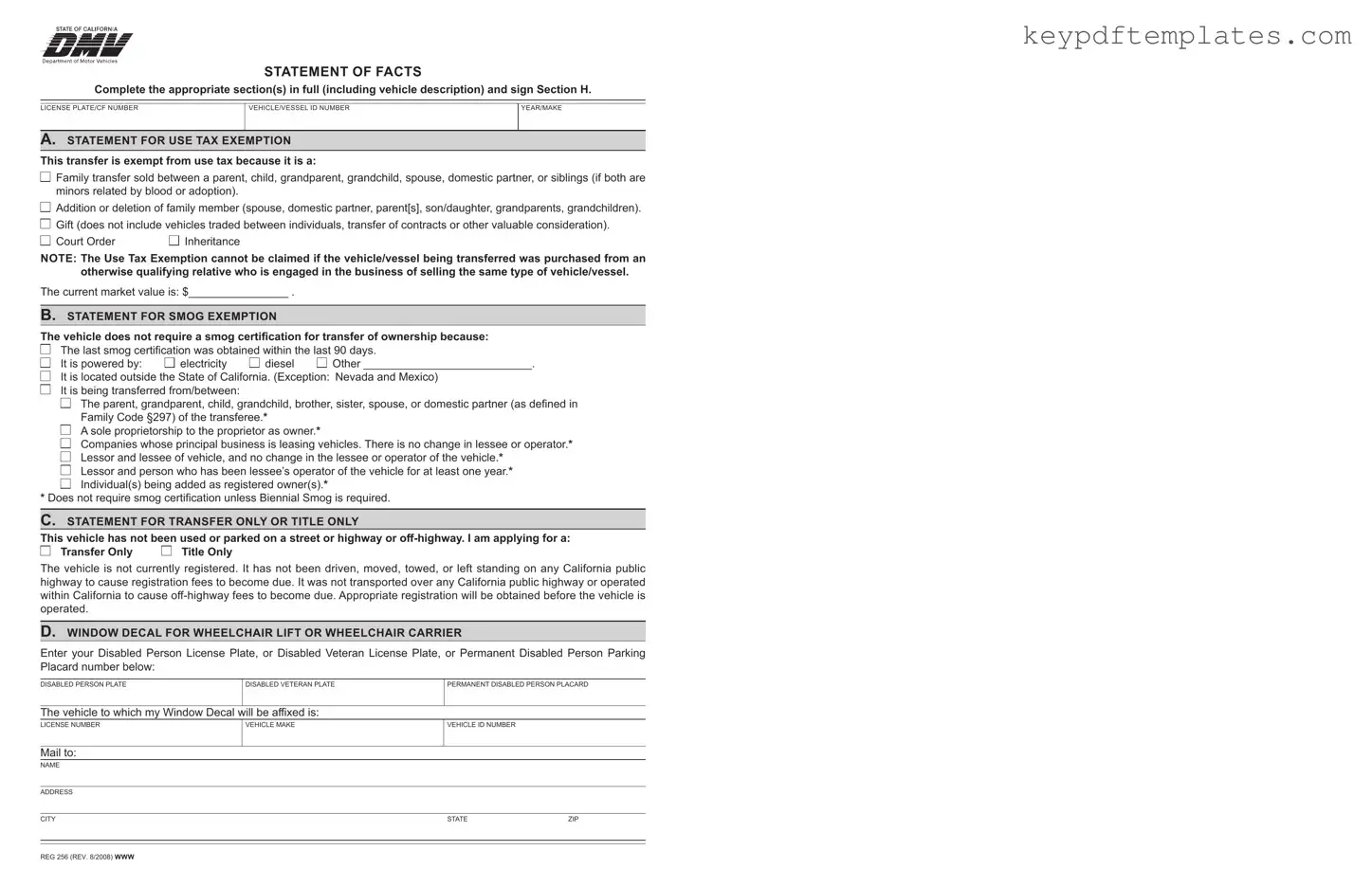Get Dmv Reg 256 Form
The DMV Reg 256 form is a crucial document used in California for various vehicle transactions, including ownership transfers and tax exemptions. This form allows individuals to declare specific facts related to their vehicle or vessel, ensuring compliance with state regulations. Understanding how to properly fill out and submit this form can simplify the process of transferring vehicle ownership and help avoid unnecessary fees.
Modify Document Online
